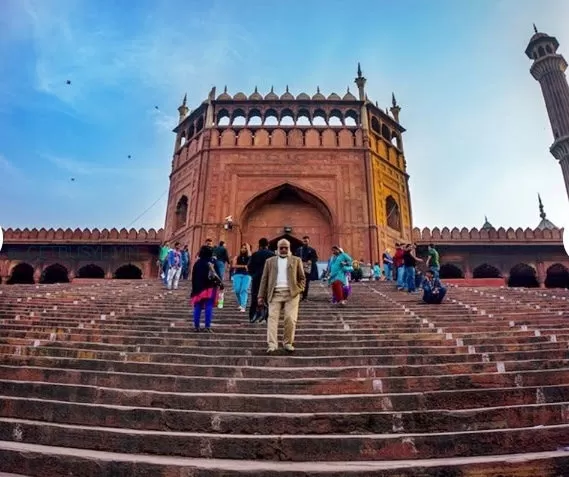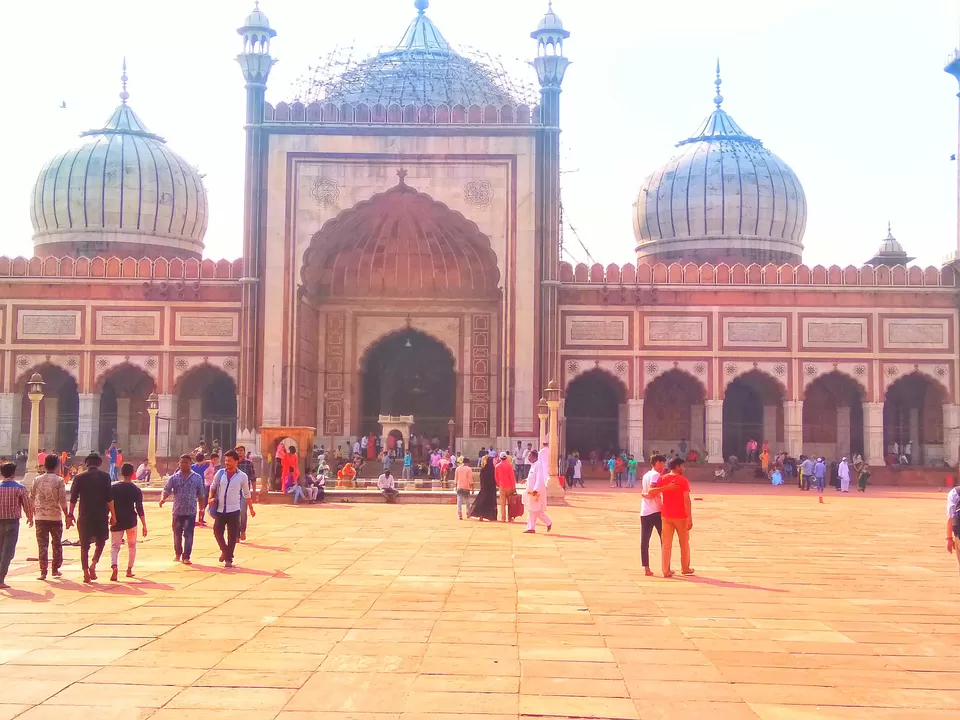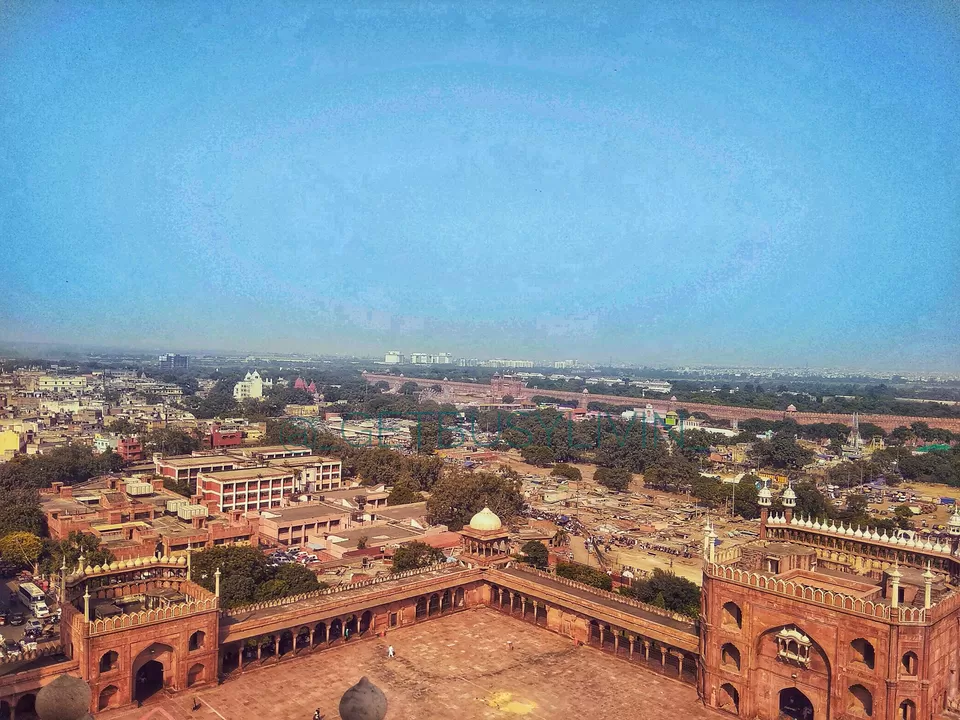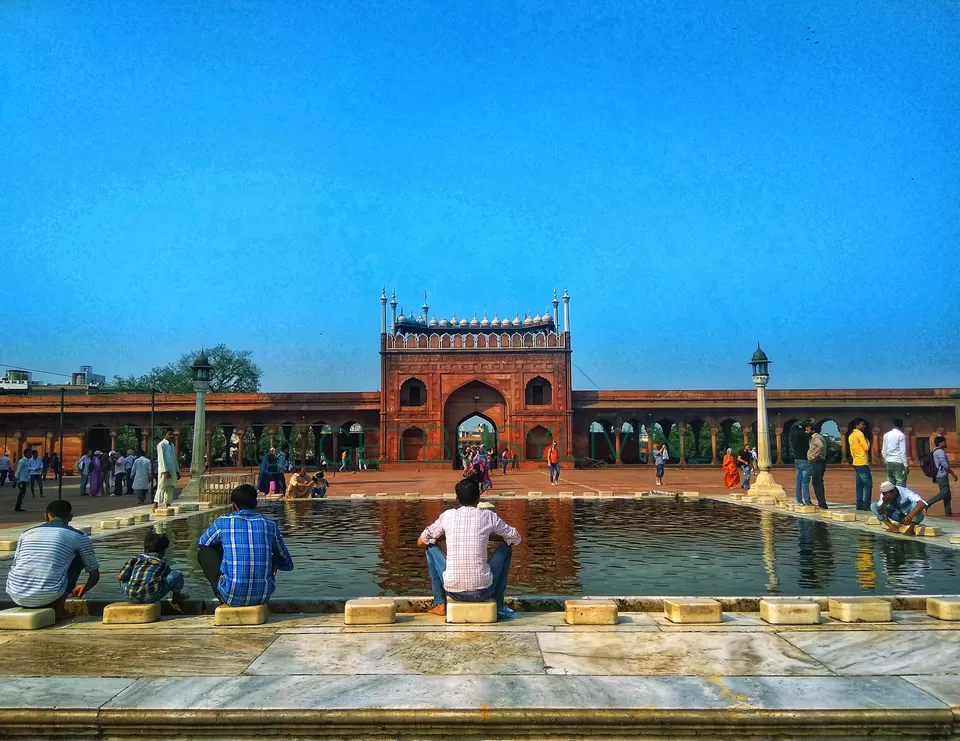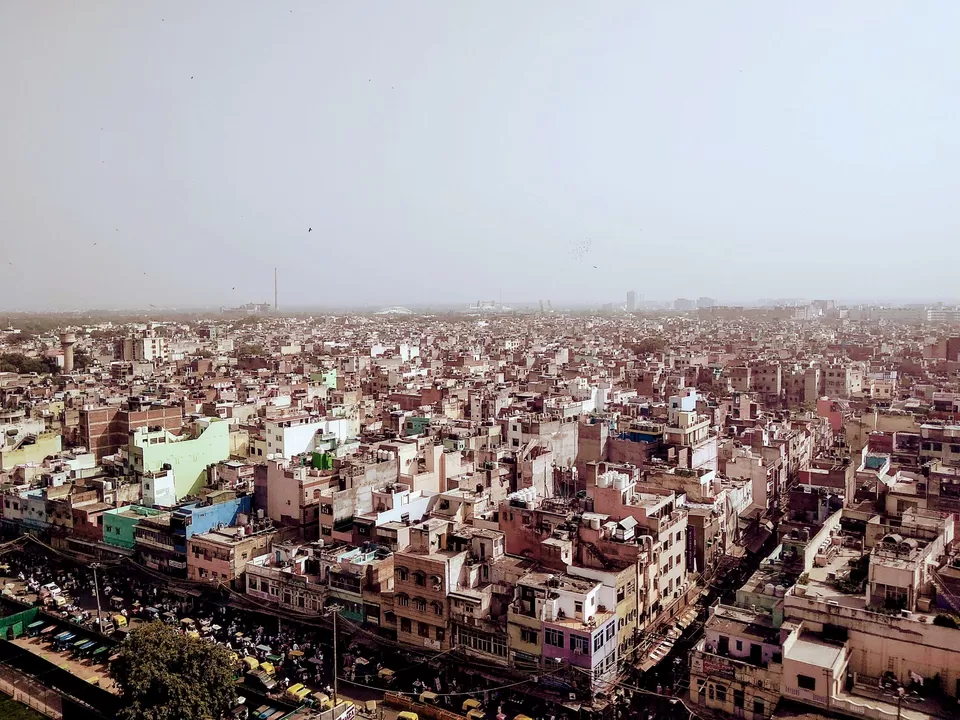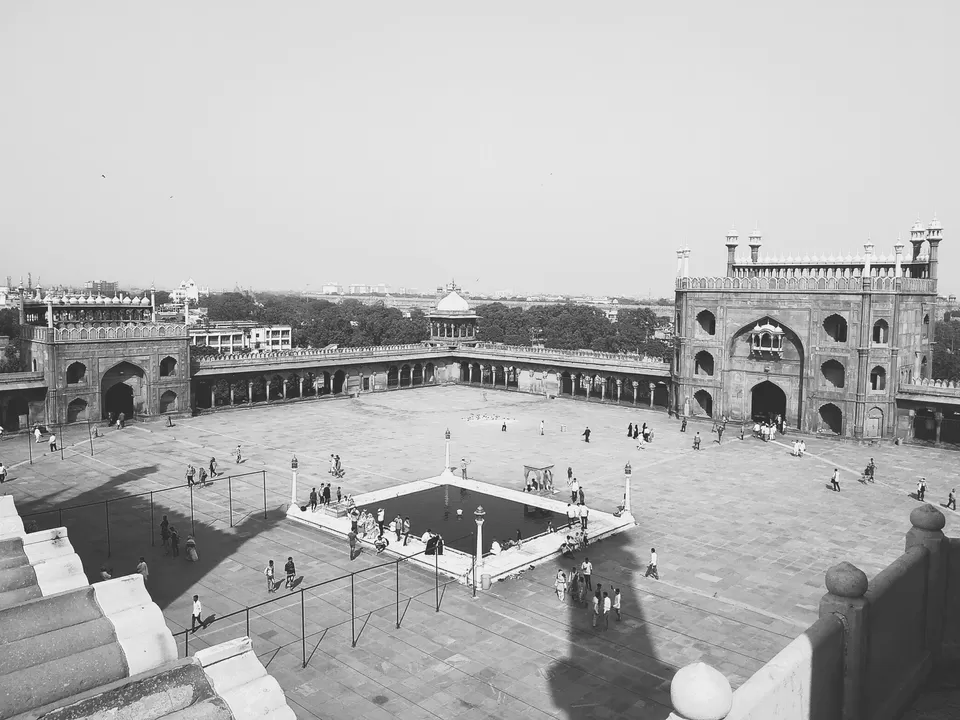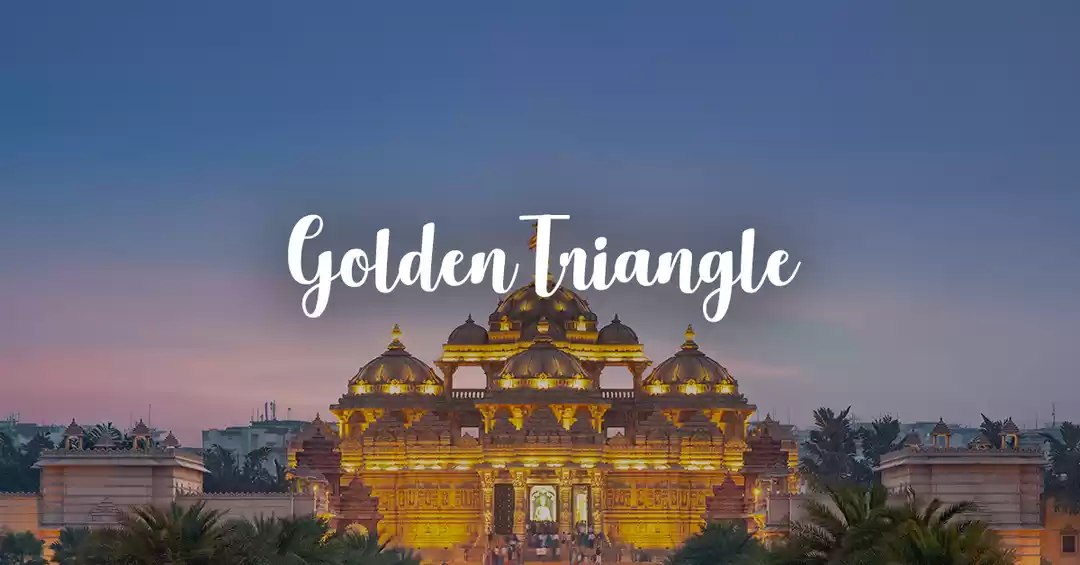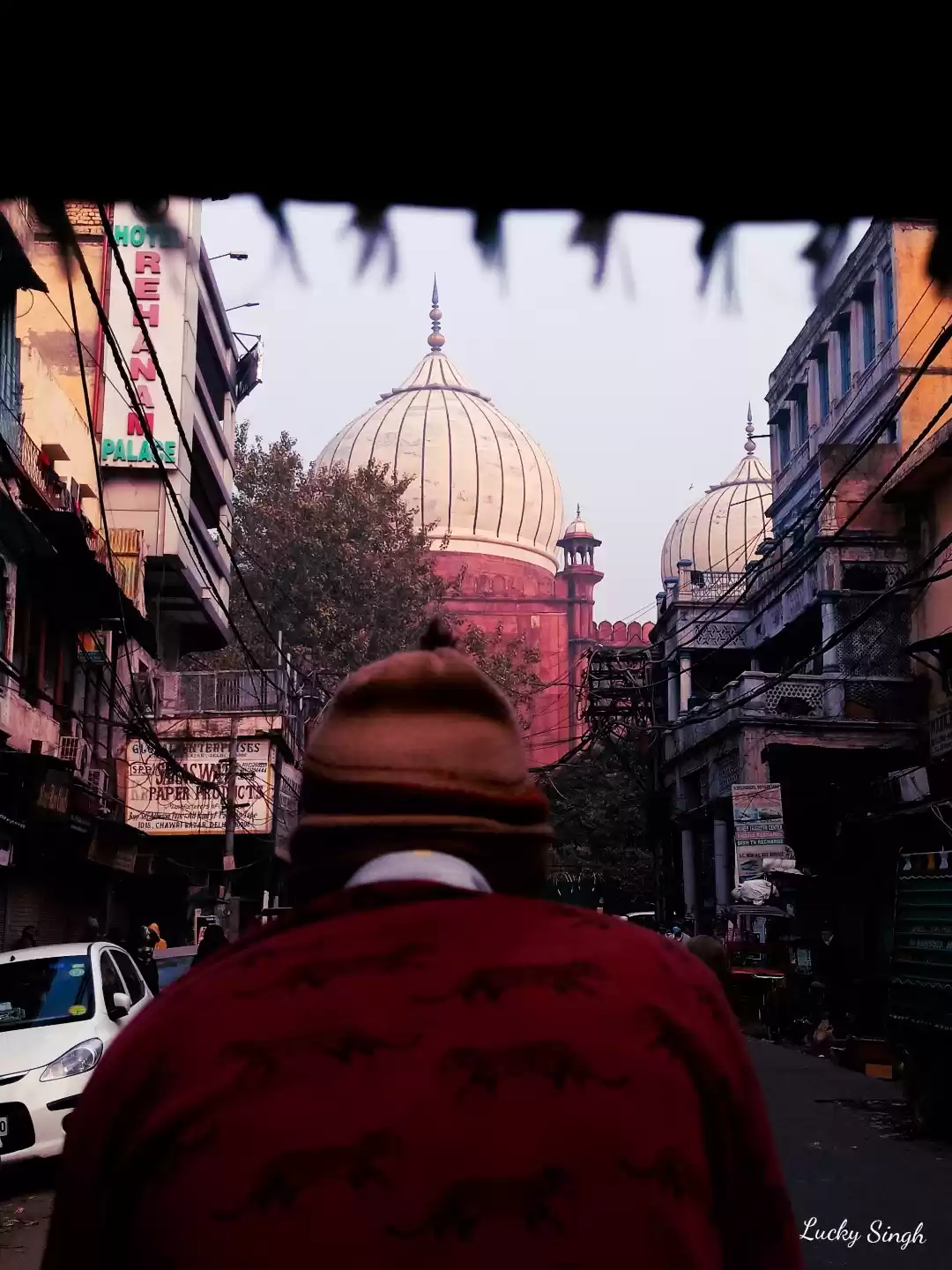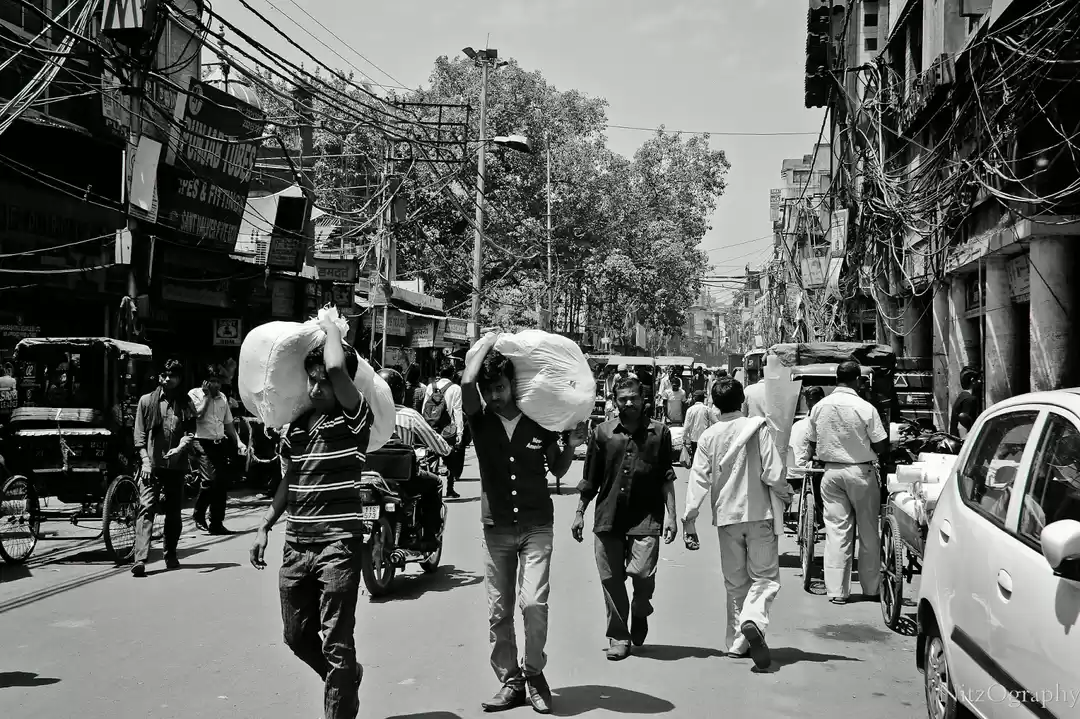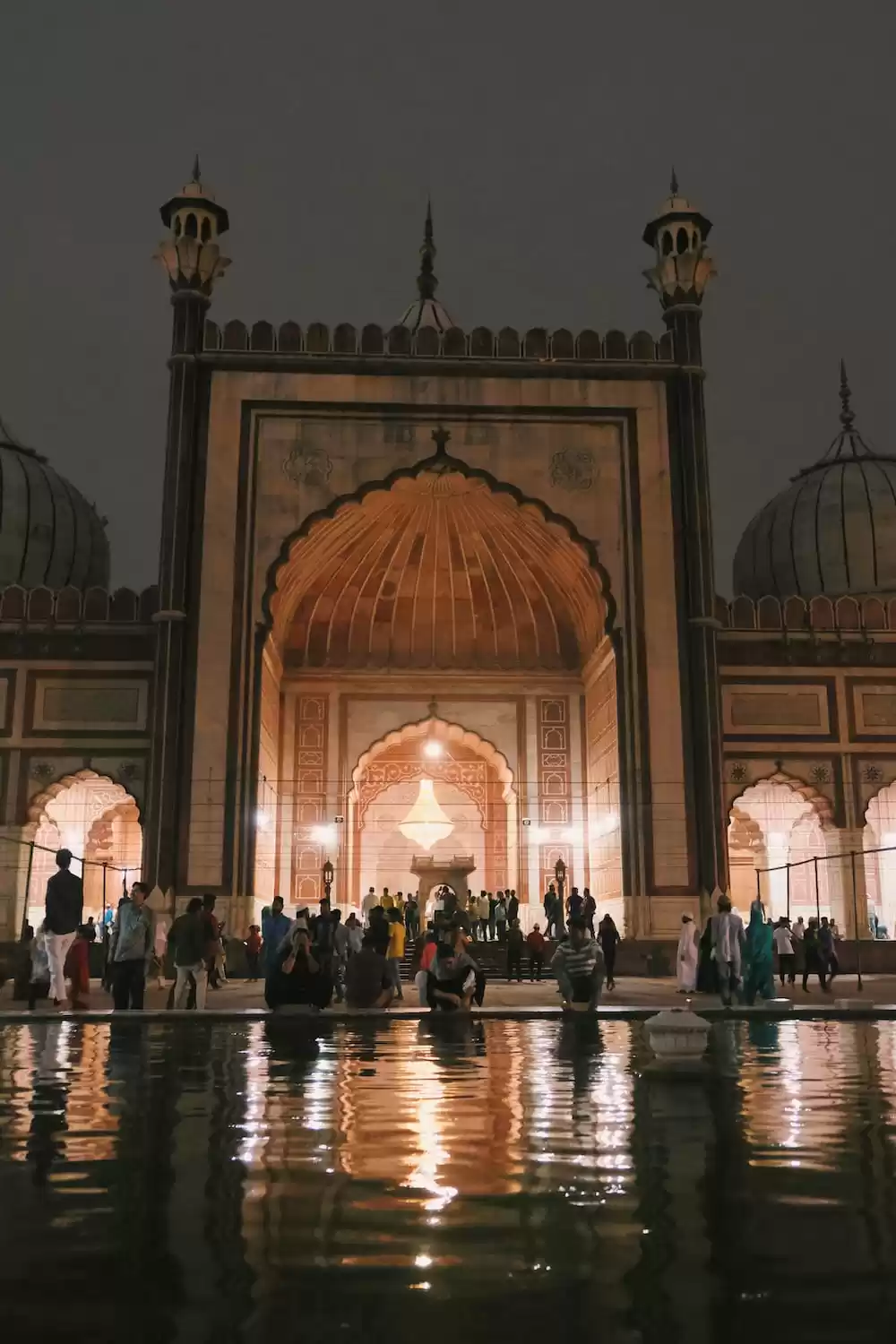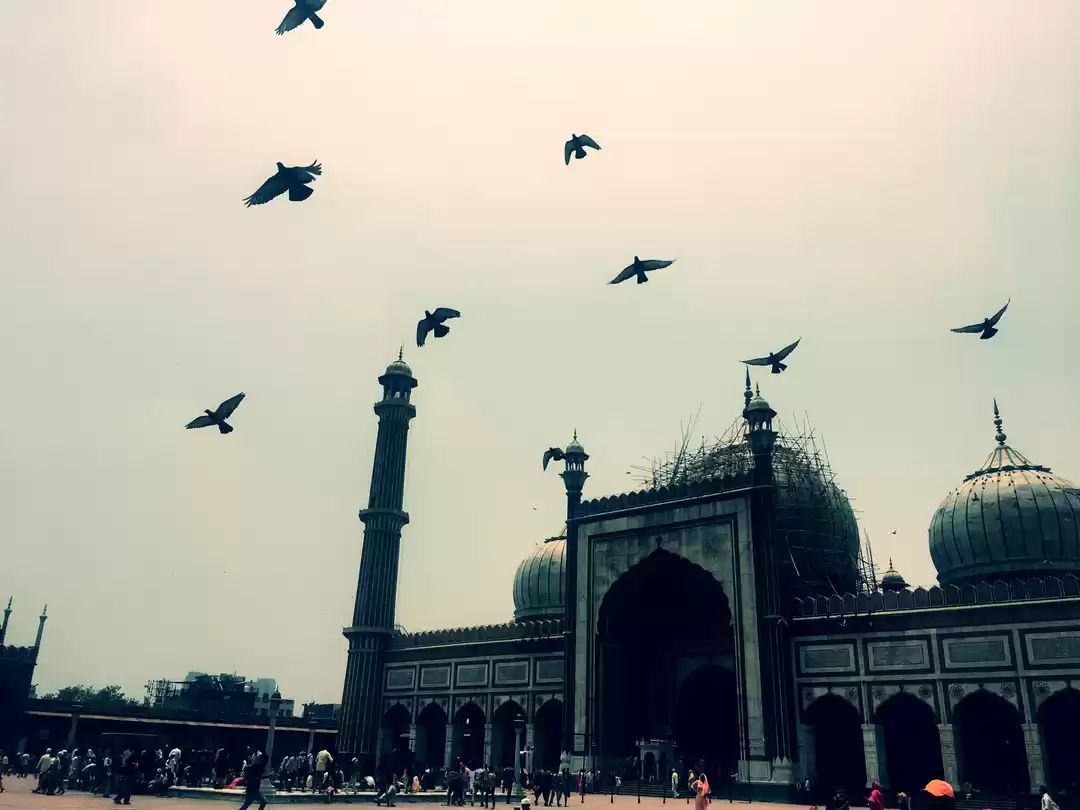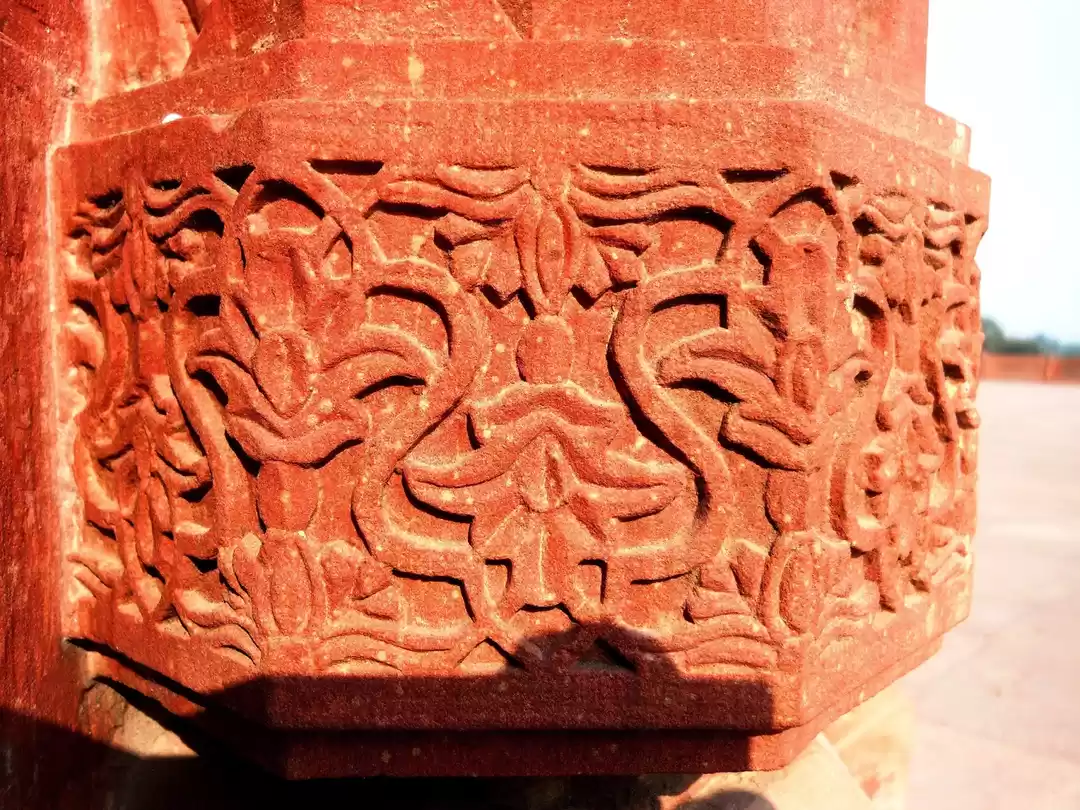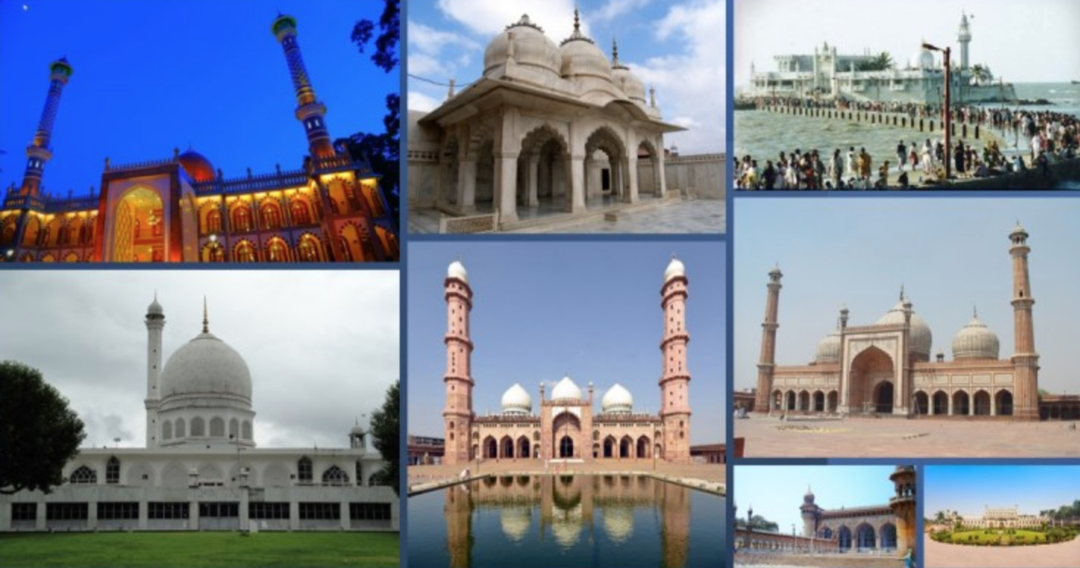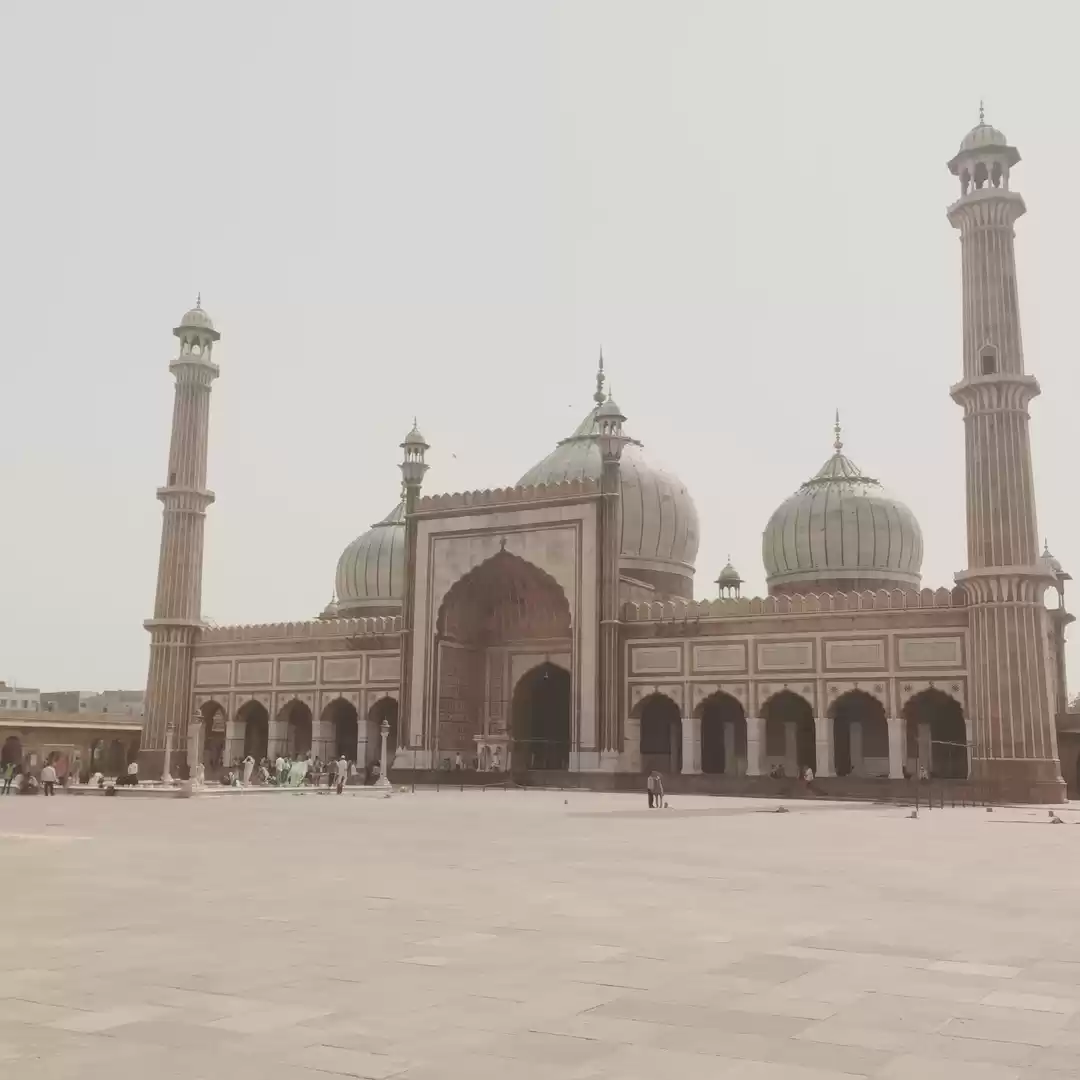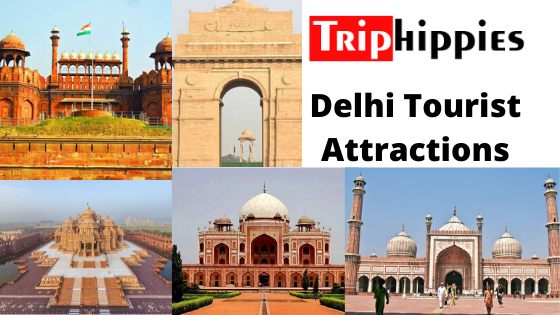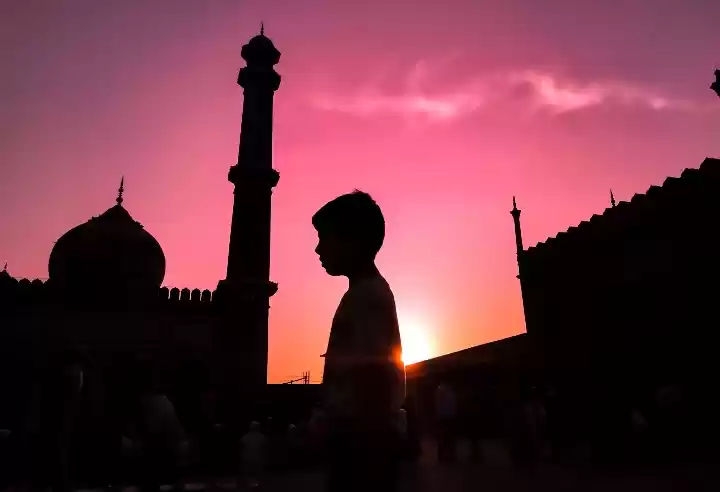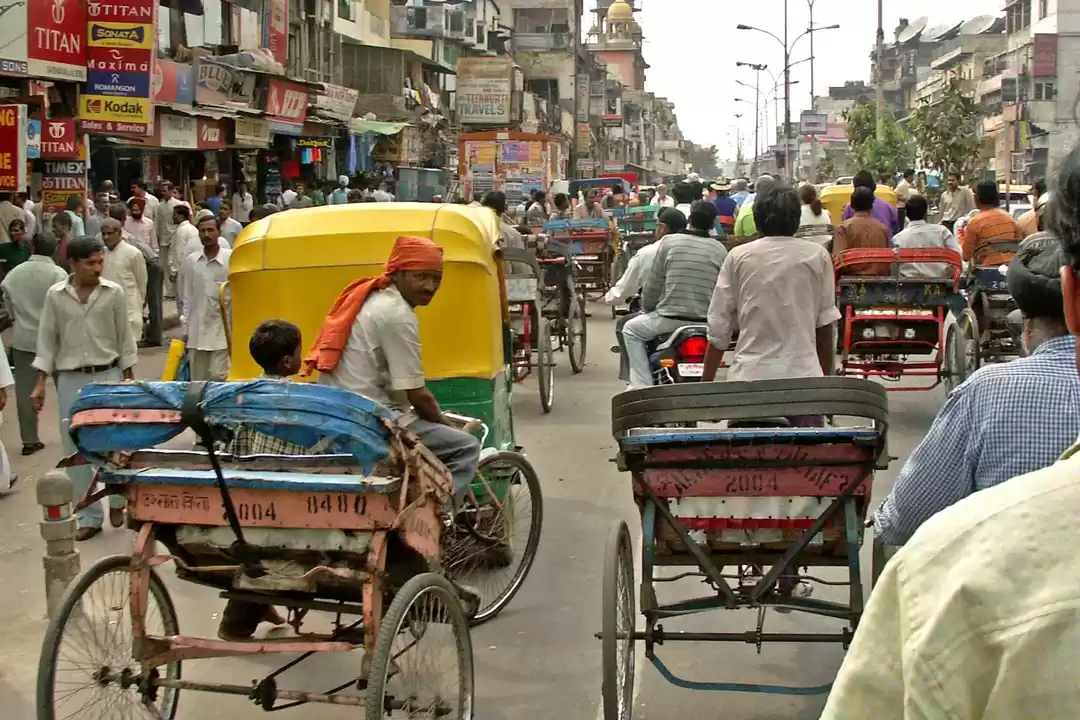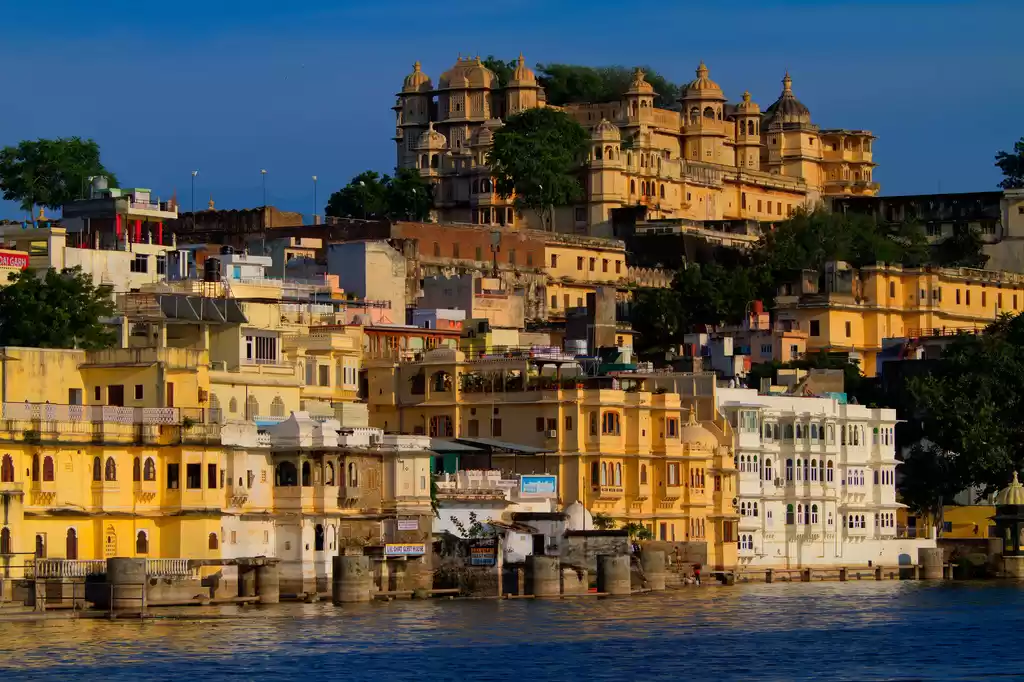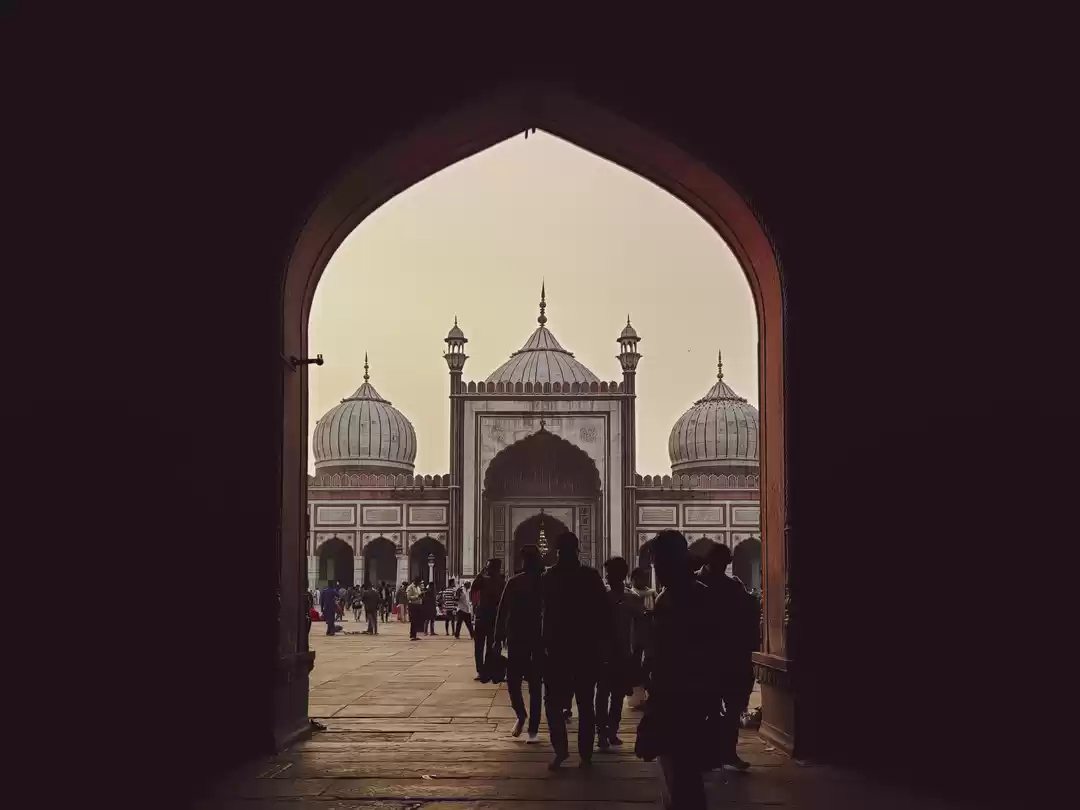
Masjid-I-Jahan Numa (lit. world reflecting mosque), commonly known as Jama Masjid is one of the largest mosques in India. Once you exit the metro gates of the newly established Heritage Line, step into the age old marketplace- Meena Baazar, where you can find anything and almost everything. At the end of the lane you see the edifice dominating the skyline of the busy Chawri Bazar.
The mosque was built by the Mughal emperor Shah Jahan in 1644 and completed in 1656. It cost the emperor a whopping 1 million rupees at that time and ended up being his final architectural extravagance to hold upto 25,000 people in the 408 sq ft courtyard at once. It has an outer wall, with 3 gates, 4 towers and 2 minarets, all decorated very tastefully with strips of red sandstone and white marble and houses several relics of Islamic religious significance like an age old transcript of the Quran printed on deer skin, the footmarks, sandals, and a red beard-hair of the Holy Prophet Mohammad.
The mosque is open to visitors throughout the week, except during the prayer hours. You can climb the 130 steps of the 40 m high southern minaret for a fee of Rs.100 to experience a breathtaking view of Chandni Chowk, a maze of narrow streets. Even the Red Fort is visible from there. The climb is strenous as the steps are steep, but the view is definitely worth it. It was all so picturesque at that moment, me standing on the top of that tower, the wind hitting my face and my hair flowing free behind me. It was without question one of those moments where I wish my life was a movie.
The hauz, in the center of the courtyard, is an ablution tank for washing hands, face and feet before entering the main building for prayer. It symbolizes the ritual of baptism needed to enter the community of believers.
The atmosphere here is so pure and peaceful when juxtaposed with the clamorous streets outside. The din of the markets fade out as you keep climbing till all you can hear is your heavy breathing and an occasional eagle's cry.
An exceptional example of the Mughal architecture, this shrine is over 350 years old and there isn't much of its beauty lost. The winds here are made of the prayers of the devotees, laughter of the children, wonder and excitement of the tourists and the delicious smell of food wafting in from renowned restaurants like Kareem's and Al-Jawahar.
As I sat on the steps wearing my shoe, I took a moment to reflect what I saw and take it all in. I entered a busy market to visit a serene mosque. The atmospheres very much in contrast but co-existing harmoniously. I realized that this is the symbolism we need in our life. People keep working hard everyday, refusing to sit back and appreciate what they have and in the process, missing out on most of the fun part of life, because they fail to work out a harmony between both. This was a much needed trip. Gratitude. That's all I had.


